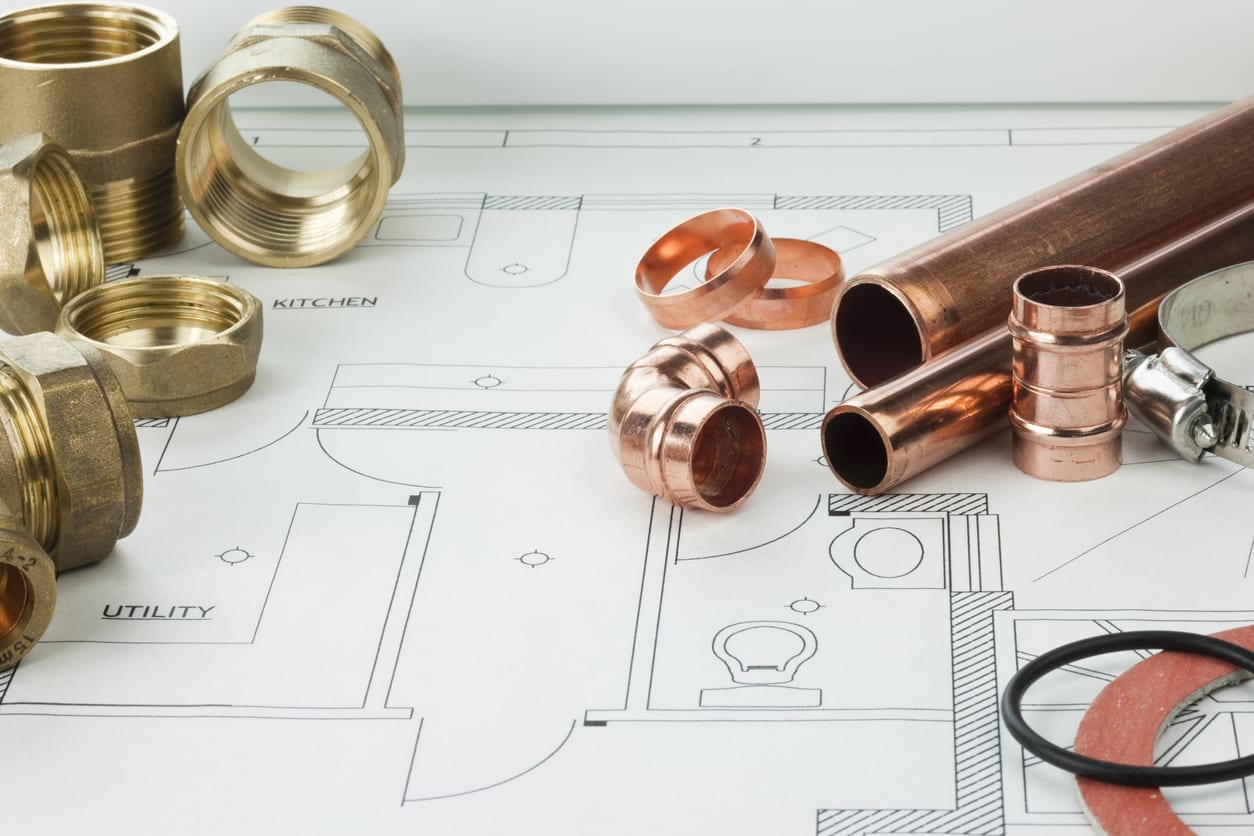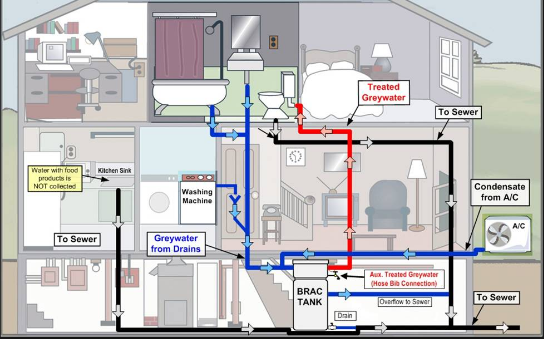Understanding Your Property's Plumbing System Anatomy
Understanding Your Property's Plumbing System Anatomy
Blog Article
We've encountered this article on Understanding Your Home's Plumbing Anatomy down the page on the web and accepted it made perfect sense to share it with you in this article.

Understanding exactly how your home's pipes system works is necessary for every homeowner. From delivering clean water for drinking, food preparation, and showering to safely eliminating wastewater, a properly maintained plumbing system is important for your family's health and wellness and comfort. In this detailed overview, we'll discover the complex network that composes your home's pipes and offer suggestions on maintenance, upgrades, and taking care of common issues.
Introduction
Your home's plumbing system is more than simply a network of pipes; it's a complicated system that guarantees you have access to tidy water and effective wastewater removal. Understanding its elements and how they work together can help you prevent costly repair work and guarantee everything runs smoothly.
Fundamental Elements of a Pipes System
Pipes and Tubes
At the heart of your pipes system are the pipelines and tubes that lug water throughout your home. These can be made of different products such as copper, PVC, or PEX, each with its benefits in terms of resilience and cost-effectiveness.
Fixtures: Sinks, Toilets, Showers, etc.
Fixtures like sinks, bathrooms, showers, and bathtubs are where water is used in your home. Recognizing exactly how these components link to the pipes system assists in identifying problems and planning upgrades.
Valves and Shut-off Points
Valves control the circulation of water in your pipes system. Shut-off shutoffs are important during emergencies or when you require to make repair services, allowing you to isolate parts of the system without disrupting water circulation to the whole residence.
Water System
Key Water Line
The primary water line links your home to the community supply of water or a private well. It's where water enters your home and is distributed to various components.
Water Meter and Stress Regulatory Authority
The water meter procedures your water usage, while a pressure regulatory authority makes certain that water moves at a risk-free pressure throughout your home's plumbing system, protecting against damage to pipes and components.
Cold Water vs. Warm water Lines
Comprehending the distinction between cold water lines, which provide water straight from the major, and hot water lines, which carry heated water from the water heater, assists in fixing and planning for upgrades.
Water drainage System
Drain Pipes and Traps
Drain pipelines bring wastewater away from sinks, showers, and toilets to the drain or septic system. Catches avoid sewage system gases from entering your home and additionally trap debris that might cause blockages.
Ventilation Pipelines
Ventilation pipes permit air into the drainage system, protecting against suction that could slow down drainage and trigger traps to vacant. Appropriate ventilation is crucial for maintaining the honesty of your plumbing system.
Relevance of Proper Water Drainage
Making sure correct drain prevents back-ups and water damages. Frequently cleansing drains and keeping traps can protect against expensive fixings and prolong the life of your pipes system.
Water Heating Unit
Kinds Of Water Heaters
Hot water heater can be tankless or traditional tank-style. Tankless heating units warmth water on demand, while storage tanks keep heated water for immediate usage.
How Water Heaters Connect to the Plumbing System
Recognizing just how hot water heater link to both the cold water supply and warm water distribution lines assists in detecting concerns like insufficient hot water or leakages.
Upkeep Tips for Water Heaters
Regularly flushing your hot water heater to remove sediment, examining the temperature settings, and evaluating for leakages can extend its lifespan and enhance energy effectiveness.
Usual Plumbing Issues
Leaks and Their Reasons
Leaks can occur as a result of maturing pipelines, loose fittings, or high water stress. Addressing leaks immediately prevents water damage and mold growth.
Blockages and Obstructions
Obstructions in drains and toilets are typically triggered by purging non-flushable things or a buildup of grease and hair. Utilizing drainpipe screens and bearing in mind what goes down your drains can avoid blockages.
Signs of Plumbing Problems to Watch For
Low water pressure, sluggish drains pipes, foul odors, or abnormally high water costs are signs of prospective plumbing problems that should be dealt with quickly.
Plumbing Maintenance Tips
Routine Assessments and Checks
Set up annual plumbing evaluations to catch problems early. Try to find indications of leakages, rust, or mineral buildup in faucets and showerheads.
DIY Maintenance Tasks
Easy tasks like cleaning faucet aerators, checking for toilet leakages making use of color tablet computers, or protecting subjected pipelines in chilly environments can stop major pipes concerns.
When to Call a Specialist Plumbing
Know when a plumbing problem calls for specialist proficiency. Trying complex repairs without proper expertise can cause even more damage and greater repair work costs.
Upgrading Your Pipes System
Factors for Updating
Upgrading to water-efficient fixtures or replacing old pipelines can enhance water top quality, minimize water expenses, and enhance the value of your home.
Modern Pipes Technologies and Their Advantages
Check out technologies like clever leak detectors, water-saving toilets, and energy-efficient water heaters that can save money and reduce environmental impact.
Cost Factors To Consider and ROI
Determine the in advance expenses versus long-term financial savings when thinking about plumbing upgrades. Several upgrades pay for themselves via minimized utility costs and fewer repairs.
Ecological Effect and Conservation
Water-Saving Components and Appliances
Mounting low-flow faucets, showerheads, and commodes can substantially reduce water use without sacrificing efficiency.
Tips for Reducing Water Use
Easy habits like taking care of leakages immediately, taking shorter showers, and running full loads of washing and dishes can preserve water and lower your utility expenses.
Eco-Friendly Plumbing Options
Take into consideration sustainable pipes products like bamboo for flooring, which is durable and green, or recycled glass for countertops.
Emergency Readiness
Steps to Take Throughout a Plumbing Emergency situation
Know where your shut-off valves are located and exactly how to switch off the supply of water in case of a ruptured pipe or significant leakage.
Significance of Having Emergency Calls Handy
Maintain call information for neighborhood plumbing technicians or emergency solutions conveniently available for fast action throughout a plumbing dilemma.
Do It Yourself Emergency Fixes (When Suitable).
Momentary fixes like utilizing air duct tape to patch a leaking pipeline or placing a container under a trickling tap can decrease damage up until a specialist plumbing shows up.
Conclusion.
Comprehending the makeup of your home's plumbing system equips you to preserve it efficiently, saving time and money on repair work. By complying with normal upkeep regimens and remaining notified regarding contemporary plumbing innovations, you can guarantee your pipes system runs successfully for years to come.
HOW YOUR PLUMBING SYSTEM WORKS
Which Pipes Do What?
Blue lines = fresh water supply entering the building
Red lines = hot water supply entering the building
Grey lines = pipes carrying waste away from the building and venting pipes carrying gases away from the building (through the roof)
YOUR MAIN PLUMBING SYSTEMS
There are two main plumbing systems that support your home s basic plumbing needs one that brings clean water into your home, and one that sends dirty water away from your home. Connected to the toilet, bath, shower, and other faucets in your home, these two systems keep your water flowing in the right directions.
ACCESSING FRESH WATER
Fresh and clean water is brought into your home through the main water supply line . Filtered through one pipe, this water is pressured to flow into the various fixtures in your home at any given time.
This water can be sourced from a well located on your property, a pond or river (mostly cottages), or, as in most cases, from the city s municipal water treatment centre. However, it is important to note that water that is untreated, such as the water siphoned from ponds or rivers, may not be safe to drink. Personal water supplies always need to be treated for hardness and contaminants before consumed.
MUNICIPAL WATER SUPPLIES
Improve taste and odour
Remove sediment
Eliminate hardness
Reduce chlorine
COLD WATER SUPPLY VS. HOT WATER SUPPLY
Cold water flows into your home or building through the service line, which then distributes hot or cold water to your fixtures. This line is most commonly run through a central column that runs floor to floor. Hot water runs in short and straight pipes as the longer the pipeline, the more heat that will be lost in the transfer. Having shorter pipes also allows residents to access hot water more quickly.
WASTE WATER SYSTEM
Your wastewater system is divided into two parts pipes that send wastewater away from your home and venting pipes that send sewer gas away from your home. Sewage water travels through pipes that flush the water and waste towards local sewers that are operated and managed by your city or town. Most sewer systems rely on gravity to move the wastewater to where it needs to go.
The further away from your toilet or sink, the larger wastewater pipes become. This allows for waste to be disposed of from various parts of your home or business at once without pipe blockages. The angle and flow of these pipes are also essential for keeping your waste pipes clear of build up.
https://harrisplumbing.ca/how-your-home-plumbing-system-works/

HOW YOUR PLUMBING SYSTEM WORKS
Which Pipes Do What?
YOUR MAIN PLUMBING SYSTEMS
There are two main plumbing systems that support your home s basic plumbing needs one that brings clean water into your home, and one that sends dirty water away from your home. Connected to the toilet, bath, shower, and other faucets in your home, these two systems keep your water flowing in the right directions.
ACCESSING FRESH WATER
Fresh and clean water is brought into your home through the main water supply line . Filtered through one pipe, this water is pressured to flow into the various fixtures in your home at any given time.
This water can be sourced from a well located on your property, a pond or river (mostly cottages), or, as in most cases, from the city s municipal water treatment centre. However, it is important to note that water that is untreated, such as the water siphoned from ponds or rivers, may not be safe to drink. Personal water supplies always need to be treated for hardness and contaminants before consumed.
MUNICIPAL WATER SUPPLIES
COLD WATER SUPPLY VS. HOT WATER SUPPLY
Cold water flows into your home or building through the service line, which then distributes hot or cold water to your fixtures. This line is most commonly run through a central column that runs floor to floor. Hot water runs in short and straight pipes as the longer the pipeline, the more heat that will be lost in the transfer. Having shorter pipes also allows residents to access hot water more quickly.
WASTE WATER SYSTEM
Your wastewater system is divided into two parts pipes that send wastewater away from your home and venting pipes that send sewer gas away from your home. Sewage water travels through pipes that flush the water and waste towards local sewers that are operated and managed by your city or town. Most sewer systems rely on gravity to move the wastewater to where it needs to go.
The further away from your toilet or sink, the larger wastewater pipes become. This allows for waste to be disposed of from various parts of your home or business at once without pipe blockages. The angle and flow of these pipes are also essential for keeping your waste pipes clear of build up.
https://harrisplumbing.ca/how-your-home-plumbing-system-works/
I'm just very intrigued by Anatomy of a House: Understanding the Components and I really hope you enjoyed reading the entire blog entry. Do you know another individual who is excited about The Inner Workings of Your Home's Plumbing? Do not hesitate to promote it. Thanks so much for going through it.
Schedule Service Pickup Report this page